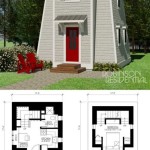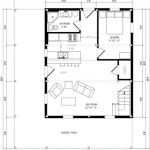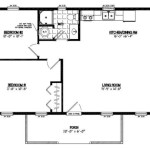Simple Room Plan With Dimensions
Creating a functional and aesthetically pleasing room layout requires careful planning, especially when working with limited space. A well-defined room plan with accurate dimensions ensures that furniture fits comfortably and the space is optimized for its intended purpose. This article outlines key considerations for developing a simple room plan, emphasizing the importance of precise measurements.
1. Measuring the Room
Accurate measurements form the foundation of any successful room plan. Using a measuring tape, carefully record the length and width of the room. Measure each wall individually as variations can occur. Note the location of doors, windows, and any built-in features, documenting their dimensions and distance from adjacent walls. These measurements should be documented in a sketch or digital drawing for easy reference.
2. Determining Room Function
The intended purpose of the room significantly influences the layout. A bedroom requires different furniture arrangements than a living room or home office. Consider the primary activities that will take place in the room. For example, a living room might prioritize seating arrangements for conversation and entertainment, while a bedroom focuses on sleeping comfort and storage solutions. Defining the room's function helps determine the appropriate furniture and its placement.
3. Selecting Furniture and Fixtures
Once the room's function is established, the next step involves selecting furniture and fixtures. Refer to the room dimensions when choosing furniture to ensure a proper fit. Using standard furniture dimensions, or measuring existing furniture, helps visualize the layout and avoid overcrowding. Consider the scale and proportion of furniture pieces relative to the room size. Large furniture in a small room can make the space feel cramped, while sparsely furnished large rooms can appear empty.
4. Creating a Floor Plan
A floor plan visually represents the layout of a room. Use the gathered measurements to create a scaled drawing, either by hand or using digital software. Indicate the position of walls, doors, windows, and furniture within the drawing. Experiment with different furniture arrangements to find an optimal layout that promotes good traffic flow and maximizes space utilization. The floor plan serves as a valuable tool for visualizing the final design and identifying potential issues before implementation.
5. Considering Traffic Flow
Efficient traffic flow is essential for a functional room. Ensure sufficient space for movement between furniture pieces and throughout the room. Avoid placing furniture in areas that obstruct doorways or create bottlenecks. Aim for a natural and unobstructed pathway that allows easy navigation. For example, in a living room, ensure comfortable movement between seating areas and access to other parts of the house.
6. Utilizing Vertical Space
In smaller rooms, maximizing vertical space can significantly increase storage capacity. Consider using tall bookshelves, wall-mounted cabinets, or vertical storage units. This strategy frees up valuable floor space and helps maintain an organized and clutter-free environment. Incorporating vertical elements also adds visual interest and can make the room appear taller.
7. Lighting and Electrical Outlets
Consider the placement of lighting fixtures and electrical outlets during the planning phase. Ensure adequate lighting for different activities within the room, such as ambient lighting for general illumination, task lighting for specific tasks, and accent lighting for highlighting decorative elements. Position electrical outlets strategically to accommodate lamps, electronics, and other devices without requiring extension cords, which can be a tripping hazard.
Developing a simple room plan with accurate dimensions is a crucial step in creating a functional and well-designed space. By carefully considering room function, furniture selection, traffic flow, and vertical space utilization, one can create a comfortable and aesthetically pleasing environment. Accurate measurements and a well-defined floor plan are essential tools for achieving a successful room layout.

Living Room Floor Plans Types Examples Considerations Cedreo

Floor Plans With Dimensions Including Examples Cedreo

Add Measurements

12 Examples Of Floor Plans With Dimensions

12 Examples Of Floor Plans With Dimensions

Simple House Plans 3 Room Design Nethouseplans Small Blueprints Plan

Living Room Floor Plan Template

Basic Bedroom Layout Design Room Planner Angled L Shape

538 Sq Ft 2 Bedroom Single Floor Plan And Elevation Simple Plans Two House

9 Tips To Consider When Planning Your Bedroom Layout
Related Posts








